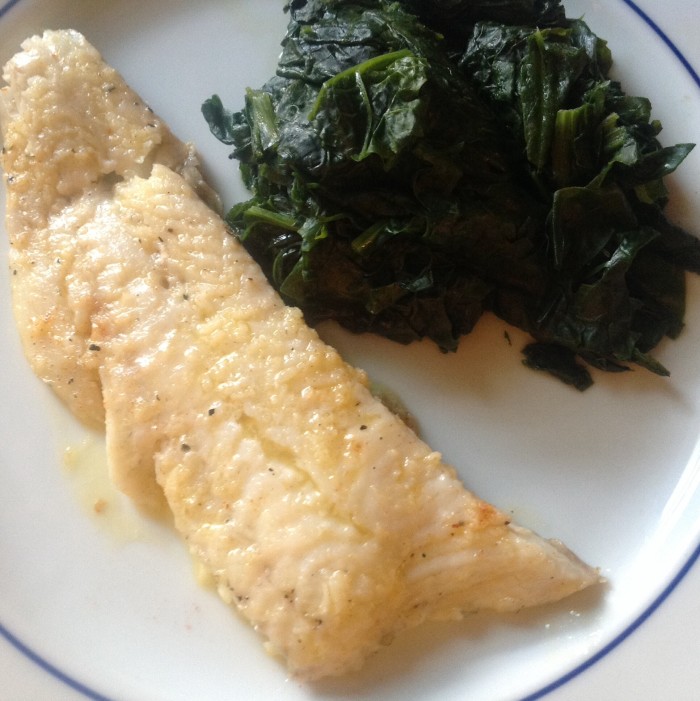Wednesday is fish night and summer flounder is what I served for supper a couple weeks ago. The piece I picked out weighing about 2/3 pound (300 grams) so at $15 a pound, I paid about $10.
At my table small is beautiful, so a little bit of protein goes a long way. Just the two of us that night and we split the flounder. That piece pictured above was my half. Cooked and ready to serve let’s say about 4 ounces (120 grams) which by American standards is on the skimpy side. But taste wise and protein wise (15 grams) it’s enough for me.
Some of my more zealous colleagues look at flounder as a low calorie / low fat option because the fish is so lean. Not me. Now I love flounder or fluke as some call it because the flesh is so delicate and the taste so subtle, but even this eater has to admit that all by itself flounder tends to be on the bland side.
My way to cook flounder is to pan-fry in olive oil, season with salt, kiss with pepper, finish with whisper of unsalted butter, and serve with a twist of lemon. Delicious but not low fat.
For the rest of the plate, steamed local spinach and farro. Local fresh spinach has plenty of flavor and to my taste at least needs nothing else, not even salt. I added some farro for whole grain carbohydrate but I took the picture before putting it on the plate. We finished off with a salad of finely diced kohlrabi, red Boston lettuce, Napa cabbage, and a couple of hydro-tomatoes dressed with my vinaigrette. And local blueberries for dessert.
The calorie count ran around 650 per person. Not a big meal by American standards but more than enough for us. It was a work night and we prefer not to have a heavy meal before going to bed.
Sounds pretty healthy doesn’t it? Let’s take a look.
Protein. A modest portion. Bonus points for seafood.
Vegetables. 6 different kinds of vegetables, total of 2 cups. Bonus points for dark green.
Fruit. Blueberries, rich in Anthocyanins, 1/2 cup. Bonus points for whole fruit.
Whole Grain. Farro is a wheat (not gluten free) and one of my favorite ancient grains. Bonus points for whole grain.
Fatty Acid Ratio: excellent which means more olive oil and less butter.
Sodium. 780 mg for the meal and 33% DV.
And for added value the meal qualifies as sustainable and affordable. In New York, flounder is local and not currently overfished. And despite the high price per pound, a modest serving size makes the cost manageable.
But there is always that question from the back of the room. How about fat? No problem. I’m a nutrition nerd and I always have the numbers. The percentage is above the recommended cut off which puts my meal into the high fat range. Not a meal for someone who needs to adhere to a low fat regime or who believes only low fat meals are healthy.
And because regulatory compliance is cast in concrete leaving little flexibility for humans to exercise judgment, labeling my meal healthy would be illegal.
It’s what I call healthy versus healthy.
And that’s why, when it comes to my own table, I exercise culinary judgment.
“Judgment is to law as water is to crops. It should not be surprising that law has become brittle, and society along with it.” The Death of Common Sense, Philip K. Howard, 1994



